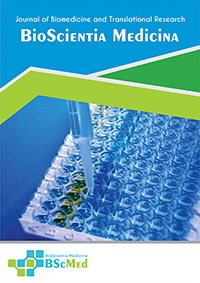Main Article Content
Abstract
Background: The management of allergic bronchopulmonary aspergillosis (ABPA) requires control of complex type 2 inflammation and reduction of fungal burden. The comparative efficacy of the primary therapeutic classes—corticosteroids, azole antifungals, and biologics—is not well established through direct evidence. This network meta-analysis was conducted to determine the optimal hierarchical treatment strategy for ABPA.
Methods: A systematic review of PubMed, EMBASE, and the Cochrane Central Register of Controlled Trials was performed for randomized controlled trials (RCTs) published from January 2015 to July 2025. We included RCTs in patients with ABPA comparing oral corticosteroids (OCS) alone to OCS plus itraconazole or OCS plus a biologic agent (omalizumab, mepolizumab, benralizumab). The primary outcome was a composite therapeutic response (≥25% IgE reduction plus clinical stability). A Bayesian random-effects network meta-analysis was performed, with results presented as odds ratios (OR) and 95% credible intervals (CrI).
Results: Seven RCTs enrolling 988 patients were included, forming a star-shaped evidence network anchored by a common placebo comparator. All active add-on therapies were superior to OCS alone for the primary outcome. Based on probabilistic rankings (SUCRA), OCS plus mepolizumab was most likely to be the most effective treatment (OR vs. OCS alone: 5.12; 95% CrI, 2.89-9.15; SUCRA: 94.5%), followed by OCS plus benralizumab (OR: 4.65; 95% CrI, 2.15-8.98; SUCRA: 87.2%), OCS plus omalizumab (OR: 3.88; 95% CrI, 2.10-7.15; SUCRA: 75.1%), and OCS plus itraconazole (OR: 2.54; 95% CrI, 1.55-4.17; SUCRA: 43.2%). Biologic agents demonstrated the greatest reduction in exacerbation rates.
Conclusion: In patients with ABPA, combination therapy is superior to OCS monotherapy. This analysis provides compelling indirect evidence that biologic agents, particularly IL-5 inhibitors, represent the most effective therapeutic class for achieving disease control. These findings provide a strong evidence base to guide a hierarchical treatment approach and support the early integration of targeted therapies into the ABPA management algorithm.
Keywords
Article Details
As our aim is to disseminate original research article, hence the publishing right is a necessary one. The publishing right is needed in order to reach the agreement between the author and publisher. As the journal is fully open access, the authors will sign an exclusive license agreement.
The authors have the right to:
- Share their article in the same ways permitted to third parties under the relevant user license.
- Retain copyright, patent, trademark and other intellectual property rights including research data.
- Proper attribution and credit for the published work.
For the open access article, the publisher is granted to the following right.
- The non-exclusive right to publish the article and grant right to others.
- For the published article, the publisher applied for the Creative Commons Attribution-NonCommercial-ShareAlike 4.0 International License.





